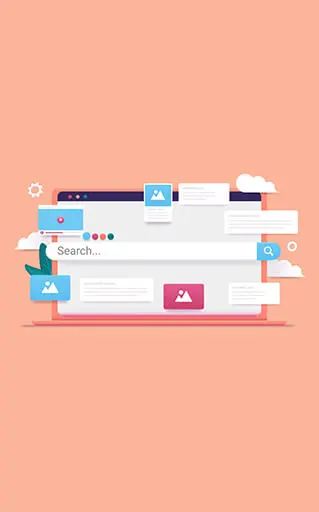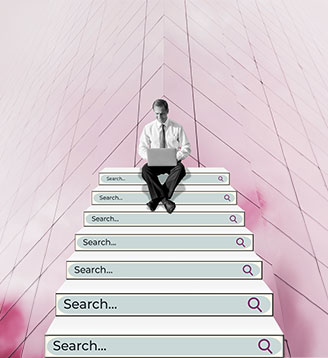
The natural next step in Omnichannel CLM (Customer Lifecycle Management) Automation
In Customer Lifecycle Management (CLM), a strategic approach to managing the entire customer journey, campaigns, and journeys are two distinct customer engagement tools or methods. Campaigns, typically short-term initiatives lasting for a defined period, aim to achieve specific objectives within that timeframe. In contrast, journeys provide a longitudinal perspective on the customer experience, spanning the entire lifecycle of the customer's interaction with the brand.
These objectives often include promoting a product, increasing sales, or enhancing brand visibility. Campaigns rely on targeted messaging strategies deployed across various marketing channels. Campaign effectiveness is evaluated using click-through rates, conversion rates, and return on investment (ROI).
They prioritize the delivery of personalized experiences tailored to individual preferences and needs. Journeys often involve the orchestration of automated interactions across multiple touchpoints and organizational functions, guiding customers seamlessly through various stages of their journey. Evaluation of journey effectiveness extends beyond immediate metrics, such as click-through and conversion rates, to encompass broader indicators, such as customer satisfaction, retention rates, and lifetime value, reflecting the sustained impact of these initiatives.
Embracing journey-based approaches in CLM not only fosters lasting relationships and ensures personalized experiences but also provides valuable insights, maximizes lifetime value, and prioritizes the customer's needs over promotional objectives. This shift empowers D2C marketers and CLM specialists, giving them the tools and strategies to navigate the dynamic marketing landscape with confidence and adaptability.
Current Consumer Space
In the face of the dynamic marketing landscape, the challenge of capturing and retaining customer attention amidst a plethora of content options is more pronounced than ever. This is particularly evident in Direct-to-Consumer (D2C) communication channels, where traditional approaches such as multiple daily campaigns with generic creatives could be more effective. However, these methods are becoming less viable, highlighting the need for a more strategic and personalized approach.
Complicating matters further are deliverability issues, with stringent policies from tech giants like Google and Apple limiting app notifications and OEMs implementing measures to optimize device performance, hindering the efficacy of conventional marketing strategies.
With consumers bombarded by an average of over 200 communications daily, the traditional reliance on discounts and promotional campaigns to drive engagement is becoming obsolete. Excessive communication can lead to user fatigue and an increased likelihood of app uninstallation or notification disablement. Focusing on CTRs, CVRs, and open rates has left CLTV out of focus.
What can we do?
In the trajectory of Customer Lifecycle Management (CLM), automation is the next frontier. It's not merely a trend; it's a necessity that both clients and agencies must grasp. The conventional practice of deploying daily campaigns has become outdated, yielding diminishing returns in today's hyper-competitive landscape. Unless a brand's primary differentiator lies in its creative communication strategy, pivoting towards journey-based approaches is imperative for sustained success. Automation is the key to this transition, enabling brands to deliver personalized experiences at scale.
A robust, meticulously crafted set of journeys is the cornerstone of effective CLM automation. These journeys are not just a linear sequence of touchpoints; they comprehensively track every facet of user interaction across digital platforms. From session durations and product views to add-to-cart actions and geographical shifts, each user engagement event can be meticulously logged and leveraged to drive targeted messaging.
Truly connected experiences
While Meta and Google deliver connected ad experiences, brands must take ownership of driving personalization on owned channels via CLM tools like Braze, Moengage, or CleverTap. These platforms empower brands to orchestrate highly personalized and contextually relevant automated journeys based on specific triggers and filters. This precision enables efficient user tracking and facilitates the delivery of bespoke user experiences.
Crucially, effective CLM automation hinges on understanding and respecting user receptivity. Brands must discern the optimal moments to communicate with their audience, gauging receptivity based on activity filters and user engagement levels. Smart recommendation algorithms and Dynamic Product Messaging (DPM) further enhance customization efforts, driving meaningful changes in user behaviour.
Randomized control groups provide a rigorous testing framework to validate the efficacy of these strategies. By comparing the outcomes of users exposed to automated journeys with those who aren't, brands can quantify the impact of their CLM automation efforts with empirical rigour.
Geolocation-based and periodic journeys represent additional layers of sophistication, reducing reliance on traditional campaign-based approaches. This nuanced approach not only optimizes resource allocation but also minimizes the risk of channel fatigue or disengagement.
Conclusion
The imperative for every D2C marketer and CLM specialist is clear: it's time to reevaluate and collaborate closely with user experience designers and branding teams. This collaboration is crucial in optimizing owned channel messaging. By leveraging data-driven insights and adopting a research-oriented mindset, brands can enhance conversions, foster repeat purchases, and elevate site engagement, all while safeguarding the integrity and efficacy of their owned channels


We’ve got your details and we’ll be in touch soon.
Till then, stay awesome!